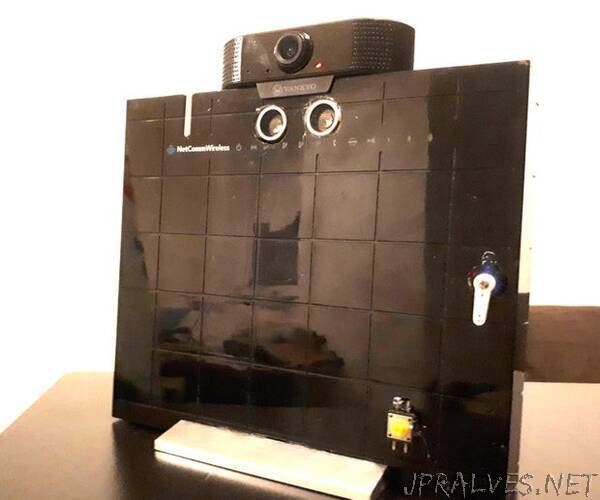
“Through Code Club I have come to appreciate the value of visual, no-code approaches to teaching computational thinking. I wanted to expand upon the physical computing education possible with a Micro:Bit and also to introduce IoT and AI to Code Club audiences (9 - 13 year olds in schools, libraries, makerspaces and youth clubs).
I stumbled on TJBot, which was my first exposure to node.js. I was intrigued by the API-based method of interacting with Watson using a Raspberry Pi, but I considered node.js to be too complex for my intended audience, and TJBots sensors and actuators to be too limited for my purpose.
At the same time, my employer was throwing away an old 3G router, and I wondered if I could squeeze a Raspberry Pi and other bits inside. Gradually the idea of repurposing the router enclosure to create a physical computing / IoT / AI console took shape.
My current build includes:
A Raspberry Pi
A webcam
A microphone (in the webcam)
An ultrasonic sensor
Capacitive touch sensor
Momentary switch
A DHT11 or DHT22 temperature / humidity sensor
4 LED outputs (Red, Green, White, and a RGB LED)
A SG90 servo motor
A Bluetooth speaker
Combined in a multitude of ways, the above kit allows the user to explore various aspects of physical computing / IoT and AI.
All of the interactions - inputs, outputs, AI interaction etc are handled using Node-RED, in keeping with my goal of employing visual / no-code programming (although, strictly speaking, Node-RED is a low-code platform).
This instructable covers:
The build, and lessons learnt
Dealing with wireless connections in various locations (I’ll be using the console in many workshop locations)
How I’ll be using the console in educational and maker contexts
Plans for the next iteration of the build”
